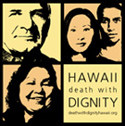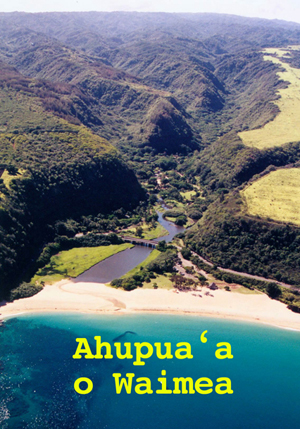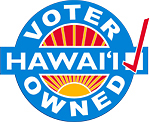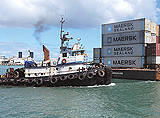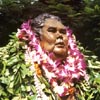
Good communications is like good sex. If one's never had it, one may be satisfied with what they're getting. Sadly, I see golden opportunities lost and scarce resources underutilized every day by business, by government, and by non-profit organizations -- large and small -- when the need arises to influence public opinion to advance their agenda.
Abraham Lincoln said, Public sentiment is everything. With public sentiment nothing can fail; without it, nothing can succeed. He who molds public sentiment goes deeper than he who enacts statutes or decisions possible or impossible to execute. All might agree that this has never been more true than today. Simply put, the success or failure of everything you do depends entirely upon your ability to communicate.
The failure to manage public opinion is particularly unfortunate when critical social or environmental issues or major public policy initiatives are at stake. Through the years, I've observed that the failure of most organizations to actively engage the public in a meaningful way usually falls into one of two categories. They either engage communications people with a classical PR background and little-or-no understanding of the current technology, or they utilize those who may be proficient with the technology but with little or no classical PR experience. A combination of the two is unique and, given the right circumstances, can greatly change the odds; sometimes the world. There is of course a third category; when organizations engage communications people with no experience whatsoever -- but that's another story entirely.
While assembling the following case studies, I was reminded that, without exception, we were always at a great disadvantage financially; outgunned by money and paid staff. This speaks to the efficacy of my communications model and I illustrate the "how to" of many of my routine Best Practices below. This is a work in progress, a "how-to" book which will ultimately include key background documents, photos and comments to better illuminate how the following events all occurred. As you might suspect, none just "happened" all by themselves.
 he following Case Studies were culled from my 25 years work based in the Hawaiian Islands, "the most remote land mass in the world" where over 45 first languages are spoken. Suffice to say, the Islands have been a fantastic laboratory for my communications model.
he following Case Studies were culled from my 25 years work based in the Hawaiian Islands, "the most remote land mass in the world" where over 45 first languages are spoken. Suffice to say, the Islands have been a fantastic laboratory for my communications model.
Because of the tsunami of vacation-travel industry PR about Hawaii's "sun, surf and pristine beaches", most people may view Hawai`i from the outside as being a place where nothing very innovative ever happens. This is patently untrue and I'll give you just one example. Every time you slide your credit or debit card through a machine, just remember this technology was invented in Honolulu. VeriFone was founded and incorporated in Hawai`i on April 14, 1981. Only after the original Hawai`i founders had become very rich, was the company sold and moved to Santa Clara, California.
The fact is, Hawaii's tropical climate is an ideal work environment and the casual lifestyle attracts many brilliant, innovative, creative people from around the world. And our remoteness gives us a proverbial "catbird seat"; a 35,000' view of the dramatic changes taking place every day around the globe and in Washington DC. One can sometimes be "too close to the forest...".
My work has encompassed the vast geographic expanse extending from Hawai`i to the Eastern Coast of the United States, and West across the International Dateline to Japan. Because of Hawaii's close cultural and business ties to Japan, I was indeed "covering" this part of the globe before the Fax machine, Internet & email and Cell phones. Perhaps difficult to imagine now, but when I first entered the field, the only technolgy availible to those of us outside the big corporations was the telephone, and if you were prosperous, you might have an enormous, very-expensive Xerox copy machine. My how things have changed!
I'll be announcing my "retirement" sometime in the near future in order to have the time to complete my book and companion seminar about what I refer to here as the model. As simple as the techniques indeed are, applying them -- implementing -- is not so easily explained. My book will hopefully impart some clues as to how I think about performing my work in this personally-rewarding, sometimes denigrated, and oft-misunderstood business of managing public opinion AKA "Public Relations." If you're interested in learning more about my model, its techniques, my brief thoughts on technology, and about some of the many people and influences that led to its development, check that out here. The following is far from being inclusive but it may whet your appetite for my "How To" book and seminar now in process.

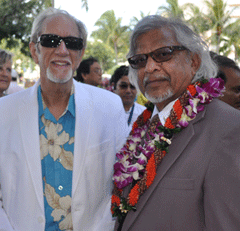 In late February of 2011, we were honored to manage the media for a series of lectures and public events in Honolulu with Dr. Arun Gandhi, the grandson of the late Mahatma Gandhi. Dr. Gandi's message to the world from Honolulu was "On Creating World Peace" relating to the continuing unrest in the Middle East and North Africa. The tour was sponsored by the Gandhi International Institute for Peace and the We Are One Foundation. Our original media release went viral with over 25,000 international stories generated. The local media included a pre-event feature story in the Honolulu Star-Advertiser, a followup photo story and numerous other local and international news stories were generated.
In late February of 2011, we were honored to manage the media for a series of lectures and public events in Honolulu with Dr. Arun Gandhi, the grandson of the late Mahatma Gandhi. Dr. Gandi's message to the world from Honolulu was "On Creating World Peace" relating to the continuing unrest in the Middle East and North Africa. The tour was sponsored by the Gandhi International Institute for Peace and the We Are One Foundation. Our original media release went viral with over 25,000 international stories generated. The local media included a pre-event feature story in the Honolulu Star-Advertiser, a followup photo story and numerous other local and international news stories were generated.
(Photo: Scott Foster with Dr. Arun Gandhi)
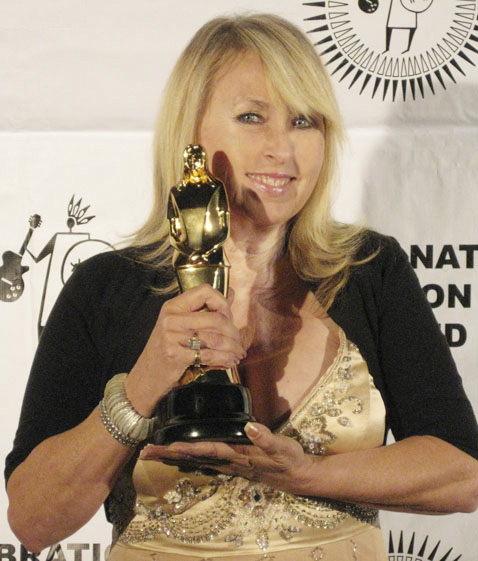

I strongly encourage my students to do as much pro bono volunteer work as possible in order to gain real-world experience working in their chosen field. There are so many worthy causes and projects out there needing just a little help and one never knows what might happen! This case study is a perfect example. My phone rang in late 2009 and I found myself talking with a lady, obviously in distress. She was about to premier her documentary film at the University of Hawai`i and her press agent had to drop out. Would I assist her with a "simple" local media release? I thought this would be a one-time effort but little did I know what the Universe had in store for us!
Since the premiere of Hawaii A Voice For Sovereignty at the U.S. Capitol Building in Washington, D.C. in 2009, it has won seven prestigious awards including the Maui International Film Festival, the NY International Film Festival, the Maori Film Festival in New Zealand, the Berkeley Film Festival, and most recently (November 9, 2010), Hawaii A Voice For Sovereignty was named "Best Environmental Film" at the closing ceremony of the Red Nation Film Festival in Los Angeles. Hosted by Joanelle Romero, filmmaker, Catherine Bauknight (above) accepted the gold-plated bronze statuette of a female Native American women on behalf of the Native Hawaiian People. This historic event was remarkable because it is the Native American Indian's first public recognition of the Native Hawaiian's quest to reclaim their sovereign rights in Hawai`i. The film had a special event screening at the Universal Periodic Review of the United Nations in Geneva on November 3, 2010.
I later learned that Catherine's exploration of cultural identities had its origins within her distinguished photojournalist background. A professional photographer for over two decades, her work has graced the cover of Time Magazine and has been featured in numerous other such distinguished publications including: The New York Times, The Los Angeles Times, Newsweek Magazine, USA Today, Rolling Stone, and People Magazine. Bauknight was one of five international photographers who risked their lives to cover the Tiananmen Square massacre in 1989.
The documentary film is raising global awareness of Hawaiian culture, spirituality and history by carrying the voices of kupuna o Hawaii nei (elders of Hawai`i) to share with the world what has happened to Hawaii and to the Hawai`ian people since the first contact with the West. It is being endorsed by a growing list of celebrities active in the indigenous rights movement including Ted Danson, Twilight saga star Kiowa Gordon, and Kris Kristofferson. Follow Hawaii A Voice For Sovereignty on its path to raise awareness throughout the world at www.hawaiiavoiceforsovereignty.com

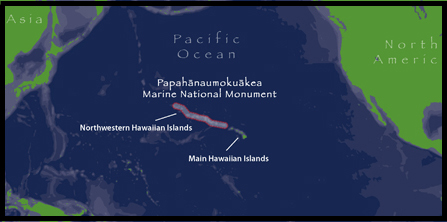
Letter of Appreciation: The Pew Charitable Trusts
The original media release
The Pew Charitable Trusts retained SF&A in March of 2006 to help advise local political and media strategy to advance the goal of establishing a National Marine Sanctuary in the Northwestern Hawaiian Islands. To everyone's great surprise, on June 15th, 2006, employing the U.S. Antiquities Act, the President of the United States instead declared the Northwestern Hawaiian Islands a National Monument, now officially the Papahanaumokuakea Marine National Monument. The name is based on an ancient Hawaiian legend related to the creation of the islands and "...serves as a reminder about the connection between man and his environment -- and our responsibility to take care of it." Scott Foster said, "We only helped push it over the top and the many individuals and organizations who had worked so long and hard for over seven years are to be commended." Management of the Monument is conducted by the National Oceanic and Atmospheric Administration (NOAA)
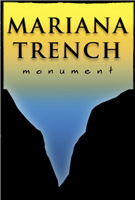
In 2008, SF&A was again retained by the Pew Charitable Trusts -- this time to help achieve a National Monument designation for the Mariana Trench. Scott Foster said, "This was a particularly exciting project which found us working literally across half the planet.
|
|
| Mrs. George Bush at signing with SF&A logo design T-shirt. |
My initial challenge was to somehow graphically define the great depth and scale of the Mariana Trench which is the deepest part of the world's oceans and the lowest elevation of the surface of the Earth's crust. Located in the western Pacific Ocean, to the east of the Mariana Islands, the trench is about 2,550 kilometres (1,580 mi) long and reaches a maximum-known depth of about 11.03 kilometres (6.85 mi. If Mount Everest, the highest mountain on Earth at 8,848 metres (29,029 ft), were set in the deepest part of the Mariana Trench, there would be 2,076 metres (6,811 ft) of water left above it. The resulting graphic and two years of political mud-wrestling was ultimately successful. On January 6, 2009, the President of the United States created the Mariana Trench Marine National Monument which will protect this pristine area of the Pacific Ocean for all time."
The organization today
"Your communications skills, political sophistication and professional agility helped make history." Originally contacted by the Office of the Governor of Hawai`i in January 2002, to advance the issue of Death With Dignity at the Hawai`i State Legislature, the organizing, free-media and public-opinion campaigns employed by SF&A indeed advanced the issue to within 3 votes of becoming state law. Governor Benjamin J. Cayetano noted, "This issue has never moved this far, this fast in any state legislature."
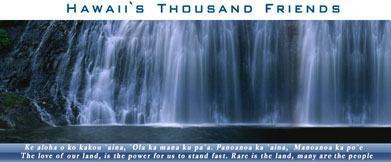
SF&A has enjoyed a 15-year relationship with Hawaii's 1000 Friends (HTF). Scott notes, "Working with Hawaii's most-acclaimed environmental advocate, Donna Wong, has not only been a pleasure, but together we have time-and-again produced some spectacular results. Because HTF's important public policy issues are usually of an esoteric nature and not easily understood by or particularly-interesting to the general public, my challenge has been to craft the rhetoric and story line to make it interesting for public consumption and to encourage an immediate action by the reader. One particular success is worth study. It's particularly important to note the dates of these two documents which I consider a text-book example of delivering the right message to the right people at the right time. None of the traditional "PR" techniques of op-eds or letters to the editor were employed and the only media was the above resulting "after-the-fact" news article." By then we had already won.
Saving "The Vatican of the Pacific" from development -- three times!
View Renewing The Vision, produced by Scott Foster which began the 5-year international organizing campaign to save Waimea Valley.
SF&A was originally retained by the Forward Foundation in December of 1999 to "save" the Ahupua'a (the Hawaiian land division from mountain to ocean) of O'ahu's historic Waimea Valley from the rapacious East Coast developer, billionaire Christian Wolfer who had bought the property out of bankruptcy seeking a "quick turn" on his money. Quickly creating The Stewards of Waimea Valley, due to the international media stories generated by SF&A, within a matter of weeks the fledgling group had mushroomed into an international organization with considerable political clout and "convinced" the Honolulu City Council to condemn the 1,875-acre site as a "City Park." "This is the fastest I have ever seen the Honolulu City Council ever move on any issue," said former Honolulu City Council Member Rene Mansho. Scott Foster's grass-roots organizing model was later presented as "the model for community based tourism development" by the University of California, Chico during the 2001 International Conference on Tourism Development and Management hosted by the Government of China. Surprisingly, the Valley was again threatened in December of 2005, after a long series of court actions and delays. For the third time in as many years, SF&A rose to the occasion to rally support. The long saga culminated on December 07, 2005, "In a stunning example of people power..." when the public pressure SF&A had organized caused the Honolulu City Council -- in a 9-0 vote -- to reverse an earlier vote to subdivide and sell of the historic 1,875-acre site. The Office of Hawaiian Affairs now owns and manages the internationally-revered Ahupua'a of Waimea Valley for all time.
Scott Foster & Associates proudly represented Hawaii's 3800 Registered Nurses for over five years, during an extremely-turbulant time for nursing nationally. Without a budget for staff support, Foster worked completely alone to successfully design and implement the needed political & media strategies, and he performed the hands-on strategic communications for a total of 11 full-blown strike actions and many-dozens of complex contract negotiations between the nurses and hospital management.
In 1999, hospitals were trying to protect their bottom line and balance federal Medicare payment cuts by reducing the number of highly-trained Registered Nurses at the bedside. Management was proposing to replace RNs with less-experienced nursing assistants. In Hawaii and elsewhere, brave nurses rallied against this ill-advised attempt in order to protect their patients.
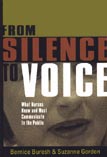 The Hawai`i PR Story is a full chapter in From Silence To Voice by Boston-based investigative journalist Suzanne Gordon and former Newsweek Bureau Chief, Bernice Buresh. It is a fascinating account of the successful communications strategy designed and implemented by Scott Foster for the 1999 - 2000 Hawai'i Nurses' Association union contract negotiations which produced "...a landmark agreement with groundbreaking and national-trendsetting language" and the effects were indeed felt across the nation. An entertaining 4-minute "old time movie" compilation of the more than 200 local and national TV news broadcasts covering the 2002 Hawai`i Nurses Strike was produced as a Christmas gift to the Hawai`i Nurses by Scott Foster & Associates and is viewable
Here [NOTE: By today's standards, this streaming video appears crude but it was state-of-the-art in 2002.]
The Hawai`i PR Story is a full chapter in From Silence To Voice by Boston-based investigative journalist Suzanne Gordon and former Newsweek Bureau Chief, Bernice Buresh. It is a fascinating account of the successful communications strategy designed and implemented by Scott Foster for the 1999 - 2000 Hawai'i Nurses' Association union contract negotiations which produced "...a landmark agreement with groundbreaking and national-trendsetting language" and the effects were indeed felt across the nation. An entertaining 4-minute "old time movie" compilation of the more than 200 local and national TV news broadcasts covering the 2002 Hawai`i Nurses Strike was produced as a Christmas gift to the Hawai`i Nurses by Scott Foster & Associates and is viewable
Here [NOTE: By today's standards, this streaming video appears crude but it was state-of-the-art in 2002.]
July 17, 2003, saw the dramatic conclusion of an 11-week nurses' strike at Oahu's rural Wahiawa General Hospital. Foster notes, "In evaluating this case study, it's important to note the 'unmitigated chaos' being caused by two warring factions within the Hawai`i Nurses Union at the very moment that the Registered Nurses were out on the picket lines advocating for their sick patients. To further complicate the matter, the powerful California Nurses Union was simultaneously attempting a hostile takeover of the smaller Hawai`i union! At the end, the brave Registered Nurses at the small Wahiawa Community General Hospital had to go it alone -- completely without their union's support -- and I stuck with them until the end; was honored to do so."
The Wahiawa strike was the fourth successful Hawai`i nurses' strike in 2003 for which SF&A had performed planning, implementation, and the strategic communications which relulted in yet another landmark win for the nurses. Among numerous other employer concessions, the settlement also gave the nurses a long-deserved 26% wage increase over three years.
Many of the media releases Foster produced during these prolonged and painful 2001 - 2002 labor actions were picked up by "one in seven" American newspapers and in Mexico and Canada, and were often featured on National Public Radio News. Sue Scheider, JD, (then) Executive Director, Hawai'i Nurses' Union said, "There was not a single day during that three-month period when we did not have media coverage - in fact, we believe our strikes at three hospitals received just as much coverage (and not just local coverage) as any strike in the world in the last decade." Read Scheider's complete statement Here
Foster remembers, "I certainly learned the limits of my communications model during this marathon series of very-difficult labor actions. Apparently I can only manage three strikes and fight off one, million-dollar union raid at any one time." While not yet complete, some of the documented history of "the longest nurses strike in American history" is now being archived Here."
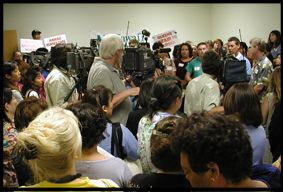
POST SCRIPT: Now some years after the fact and with a lot of reflection, I present my experiences with the Hawai`i Nurses Association (HNA) here as a cautionary tale for aspiring communications students. After all of these grand accomplishments for the Hawai`i Nurses Union, my modest $1500 monthly fee had accrued to $7,500 and that had gone unpaid because of the massive confusion brought on by the strikes, and perhaps moreso because of the hostile takeover (raid) attempt by the California Nurses Union.
The union takeover attempt failed, but by the time all of the dust had settled, HNA was divided into two openly-warring camps, their new and very-capable Executive Director who had successfully taken them through the strikes had been terminated, HNA was mired in federal court for two-years with several well-connected, highly-paid attorneys walking away with many hundreds-of-thousands of dollars of the nurses' hard-earned money, a "Master" (coincidentially another local political insider) had been appointed by a federal judge at a ridiculous hourly rate to administer HNA's finances, the nurses' $1-million strike fund (the envy of many local and national unions) had been depleated, none of the new young leadership-in-training was left standing, the union's board of directors had become completely dysfunctional, HNA had spent over $10,000 in legal fees to keep from paying my modest $7,500 -- and my biggest competitor had been hired at 4-times the money to replace me! Go figure.
It's important to know that the Hawai`i Nurses' Association is a union; an affiliate of United American Nurses, AFL-CIO. Nurses for the mostpart, do not like being in a "union", I have come to believe because they feel that their higher education should place them in another catagory from the other unions whose memberships are more or less, blue collar workers. While this may be a valid position, the fact remains that unless nurses are organized, the existing corporate hospital industry would simply put, eat their lunch.
According to the U.S. Bureau of Labor Statistics, in 2008, union membership nationally accounted for 12.4 percent of employed wage and salary workers -- down from 20.1 percent in 1983, the first year for which comparable union data is available. In 2008, Hawaii's union membership was at 24.3 percent, second only to New York at 24.9 percent. Unfortunately, as I write, many unions in Hawai`i are led by inept political insiders who are only in it for the money and political power and this is sad for me to say. Until Hawaii's nurses begin to pay attention to what their leadership is actually doing, nothing much will change for them.
I do know one thing at this point; I was never thanked for my last contributions to nursing and all I have to show for three-months of grueling work is a $10,000 hospital bill (caused by my complete physical exhaustion) and a polite letter from HNA telling me they would not pay me because they didn't have to. I can only wish that the rank and file nurses would have acted to right this wrong; fought 1/2 as hard for me as I did for them. Older and wiser now, I'll not do it ever again -- and there will come a time...
MORAL: Get as much of your money up front as possible and don't become emotionally invested in a client's cause, as worthy as it may be! Sometimes one should just walk away.
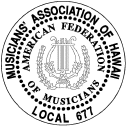
The October 16, 2003, media release prepared for the Local 677 Musicians Union representing the musicians of the Honolulu Symphony Orchestra "put a pretty face on an ugly situation" as one musician later noted. The musicians' sincere message of hope and unity was transmitted internationally after their accepting a draconian 20% cut in wages and retirement benefits to help save "the oldest symphony orchestra West of the Missippi River." Our media release was picked up and broadcast to 90% of the world by the legendary Paul Harvey during his October 25, 2003 syndicated ABC radio news broadcast.
After the musicians' 20% wage cut (above), Scott Foster volunteered to assist the 107-year old Honolulu Symphony Society in raising money by shepherding legislation through the Hawai`i State Legislature. The original plan of action was laid by Foster, famed local union activist 90-year old A.Q. McElrath, and the American Federation of Musicians, Local 677 President, Michael Largarticha. Their effort resulted in a landmark $4 Million matching grant for the Honolulu Symphony Foundation endowment trust fund, and a $150,000 State "Grant In Aid" -- later increased to $250K. Foster noted, "We were particularly pleased with the outcome of this team effort. There was not a single "no" vote during the many public hearings and House and Senate floor votes; despite a legislature previously-disenchanted by the Honolulu Symphony management."
Since founding the organization with Ralph Nader in 1995, SF&A has performed the communications and political strategy for Hawaii'sAdvocates For Consumer Rights (AFCR). Foster's organization first fought industry giant, State Farm Insurance Corporation into submission after a three-year political fight. State Farm had a national team of highly-paid lawyers and organizers on the ground in Honolulu and a $500,000 media budget. The tiny AFCR organization had $36,000 total. The win resulted in a complete revamp of Hawaii's car insurance law and has saved the consumers
"...about $78 million..." a year ever since.
AFCR's next successful challenge was seeing Hawaii's unique "Fair Gas Price" law, "The "Gas Cap" passed into law in 2002. Taking effect on September 1, 2005, the law was the first in the nation to try and reign in the rapacious oil industry. The ensuing 5-year political battle was closely followed by seven other states who were considering similar regulatory legislation and the issue made international headlines. Because this was the first such challenge to the oil industry, BBC, CNN, NBC and CBS sent crews to cover the story. Sadly, the "Gas Cap" was taken offline during the 2006 Hawai`i State Legislative Session after hundreds-of-thousands of dollars flowed from the oil industry into numerous powerful incumbent legislator's campaign chests.
Scott Foster said, "The once-supportive Hawai`i State Legislature pusillanimously voted to suspend the Gas Cap and add "more transparency" to the industry reporting process. What a crock!" Later, Foster noted in a national Associated Press story, "While the jury is still out on this one, Hawaii's Gas Cap, renamed "Fair Price Indicator" will remain in place as a flashing red neon sign reminding Hawaii's consumers what the prices would have been under the Gas Cap. The Fair Price Indicator will haunt the elected officials and industry minions who sold Hawaii's consumers out -- again to The Oil Oligopoly."
AFCR has enjoyed a long series of smaller successes and continues to advocate against rapacious corporations who unfairly pick the pockets of Hawai`i consumers.
After ten years, SF&A continues as a pro bono political & communications consultant to Voter Owned Hawai`i,
formerly Hawai`i Clean Elections. Working to institute a full publically-funded political campaign finance system in Hawai`i, in 2008 VOE saw
the first such bill passed in Hawai`i which will allow the County of Hawai`i to use the system for the 2010 elections, "a major political coup" and a
great victory for the project's young advocates. Scott Foster noted, "We had known from the beginning that changing Hawaii's corrupt campaign finance system would take
many years and we needed to bring on board and nurture young advocates to oneday take over. This is sometimes difficult for old leadership, but this mutual decision
by three original advocates makes the case. Our young replacements easily understood our advanced technology and attracted their peers, while we were able to give them a solid grounding in the realities of politics
and how to develop winning strategies. This was seemingly a winning combination."
SF & A performed the communications and media strategy for the Inlandboatmen's Union (IBU) strike against the venerable Hawai'i Tug & Barge and Young Brothers ocean transportation companies. Hawaii's Pacific Business News described the event, "Result: a surgical strike in and out in four days."
Scott Foster & Associates provided the emergency pro bono communications services resulting in a last-minute groundswell of financial support and political pressure pouring in from around the world - assuring the timely completion, transport, and September 20, 2003, public dedication of the statue of Israel Kamakawiwo`ole. The bronze bust of the internationally-revered Hawaiian musician will forever perpetuate the rich legacy of "Brudda Iz." Eshewing Waikiki, the artist selected Kamakawiwo`ole's own neighborhood on O`ahu's historic Wai`anae Coast for the statues' location believing, "The statue will hopefully give the children living in this poor area of Oahu the hope that they too can reach the stars.
SF&A was retained by The Drug Policy Forum of Hawai'i to devise and implement the organizational and communications strategies needed to successfully pass the unique and very-controversial legislation now allowing the medical use of marijuana in Hawai'i - the second state in the nation to pass such a law and the first state to do so through a state legislature. The DPFH website as originally designed and maintained by SF&A (2002) - with its then-cutting-edge video-streaming capabilities - was touted as the model for state drug-reform organizations by national drug-policy reform organizations.
July 1, 1999 - September 30, 1999
Retained by the Hawai'i Coalition For Health to save the University of Hawaii's John A.
Burns Schools of Medicine and Public Health from the budget ax during a severe economic downturn,
the Medical School closure was prevented and an entire new multimillion-dollar state medical complex was later funded. Scott Foster said, "One never knows what the final results might be. We were only on this case for a few weeks with many positive and unexpected outcomes"
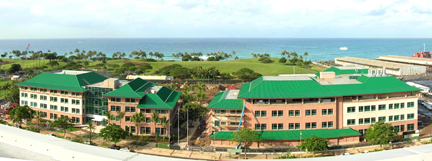
The 1998 Hawai'i Gubernatorial Campaign marked the third time since 1994 for which the services of SF&A had been contracted by Governor Benjamin J. Cayetano. SF&A Developed and implemented grass-roots & free-media public information and opinion strategies for the successful reelection of the Governor.

March 1, 1997 - May 27, 1998
At the personal request of the Governor of Hawai'i, Scott Foster was retained for 18 months to work directly with the Governor's Senior Staff and his appointed Directors in identifying and realizing specific high-profile projects deemed vital to the Governor's reelection.
Designed, produced, coordinated and managed the logistics to mount The Governor's Town-Hall Meetings, a six-month series of high-profile live and televised public-information forums conducted throughout the state with the Governor, Lt. Governor, their Chiefs of Staff, all Department Directors and Senior Policy Advisors in attendance.
Initiated, secured outside funding, and oversaw installation of a state-of-the-art media production & editing facility within the Governor's Office, and obtained a dedicated Governor's television channel within the Capitol complex - also connected to existing inter-island and international fiber-optic distribution systems.
Conceived, designed, and implemented The Governor's Report, a weekly television digest of the Governor's televised press conferences.
Designed, drafted, and produced The Governor's Community Report. The 40+ geographically targeted monthly public-information publications were hand carried and distributed by an organized pool of senior administration officials through Oahu's Neighborhood Board system and the Governor's neighbor island offices. Some 40,000 reports and related attachments were ultimately produced and distributed.
Conducted the public-education campaign articulating the Governor's reasoning behind the State acquisition during an economic downturn of the 300 acres now comprising Hawaii's Ka Iwi State Park. Then owned by Kamehameha Schools-Bishop Estate, this preservation effort prevents further development on Oahu's pristine Ka Iwi Coast.
- Advance and ground communications for The Clinton Whitehouse during the President's August 1995 Hawai`i visit to commemorate the 50th Anniversary of the end of World War II; VJ Day Details here
- 1994 Benjamin J. Cayetano successful Campaign for Governor - Client Comments;
- consultant since 1986 to numerous successful candidates for the Hawai'i State House & Senate, and various U.S. Congressional campaigns in Hawai'i;
- marketing projects for Hong Kong investor, Mr. Edward Eu;
- personal projects for Mr. Tom Gentry, Gentry Properties;
-
marketing collatoral for King Travel and the Pleasant Hawaiian Holiday corporations
Client Comments - public-opinion strategy for T. J. Mahoney and Company Re: Matlock House transitional prison housing facility.
The Associates have donated public-relations, marketing services or produced
fund-raising events for:
- Common Cause Hawai'i
- The Hawaii Consortium For The Arts
- The American Association of Retired Persons, Hawai'i Chapter - Client Comments
- The Sierra Club
- The Hawaiian Music Hall of Fame & Museum
- North Shore Country Market
- The Life Foundation
- The Names Project
- Publication of the 100th Anniversary edition of the Queen Liliuokalani translation of the Kumulipo
- The Kokua Council of Hawai`i
- The Windward Spousal Abuse Shelter project for the Hawai'i Realtor's Association
- The Hawai'i Association of Music Societies
- North Shore Surf & Cultural Museum
- Hadassah for the video production of "From Hawai'i To The Holocaust"
- "Simple Courage" video production of the Father Damien story
- Establishment of the annual Minority Veteran Recognition event during Pearl Harbor Day
- PacifiCare Hospice
- The Governor's Committee on AIDS: SF&A performed the communications and free media strategies which assisted passage of Hawaii's model needle exchange program - currently the only fully state funded, state-wide syringe exchange program in the country. Hawaii's early implementation (1990) of syringe exchange helped prevent a rapid outbreak of HIV infection among drug injectors, their sexual partners and families. 18 percent of reported AIDS cases in Hawai'i during 1997 were related to drug injection - while the rest of the U.S. reported an overall 33 percent.
